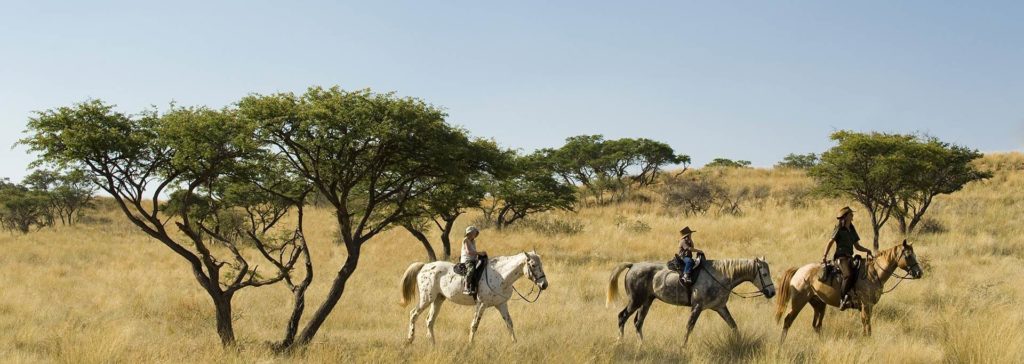The Kalahari Desert is a vast semi-arid savannah in Southern Africa and covers approximately 900,000 square kilometres of land. The desert comprises a series of diverse landscapes that are not confined to one country but stretch across South Africa, Botswana and Namibia.
One of the unique facts about the Kalahari is that most of the desert is not considered a real desert, due to the amount of rainfall the area receives.
The Kalahari Desert has been home to the native San bushmen for over 20 000 years. The word Kalahari is derived from the Tswana word Kgala, which means “the great thirst”, or Kgalagadi, meaning “a waterless place”.
Travelling to the Kalahari is a uniquely rewarding experience. Visitors can experience the essence of the region by visiting the Central Kalahari Game Reserve and the Kgalagadi Transfrontier National Park. The Kalahari Basin in Botswana includes the fertile Okavango River Delta, the Chobe National Park and Moremi Wildlife Reserve.
If you are curious about this arid landscape, continue reading, because we have listed some of our favourite facts about the Kalahari Desert below. If you’re looking to spend some time enjoying the desert beauty, why not take a 5-day Kalahari desert tour?
1. The temperatures are extreme
The weather and temperatures in the Kalahari Desert are harsh. In summer, temperatures can be scorching, reaching highs of 40°C (104°F) or more, while cooler temperatures can drop below 0°C (32°F). The weather is a result of the Kalahari’s high altitude and predominantly clear, dry air. If you are looking to visit the Kalahari, it’s essential to understand the seasons and to pack appropriately for day and night.
In summer, temperatures in the Kalahari can reach 45 °C (115°F). Sunscreen and protective eyewear are essential all year round, and travellers are advised to bring layers of clothing.
2. It is not a complete desert
One of our favourite facts about the Kalahari is that it can’t be classified as a desert. The Kalahari is not a desert in the strictest sense of the word, because of the amount of rainfall it receives annually. With somewhere between 12-25 centimetres of rains, the Kalahari Desert has a higher amount of rainfall than other deserts. The parched sand absorbs any moisture that remains after the wet season and many species of plants and shrubs thrive from this higher level of rainfall.
3. The Kalahari Desert crosses multiple countries
This massive African desert ranges over more than 900,00 km (559234,073 miles) across Southern Africa. It crosses the borders of three countries including, the eastern region of Namibia, a large portion of Botswana and the Northern Cape Province in South Africa. The Kalahari Desert forms part of the larger Kalahari Basin that includes wetlands such as the Makgadikgadi Pans and the Okavango Delta of Botswana.
4. There is diverse wildlife
The wildlife found in the Kalahari has adapted to survive the arid conditions of the desert. The wetter north in Botswana has a greater variety of wildlife than the drier south.
Antelopes that can be found in the Kalahari include springbok, oryx, wildebeest, duiker and steenbok. The Kalahari is home to desert wildlife such as meerkat, hyena, bat-eared foxes and cape fox. Surprisingly, all three African big cats are found in the Kalahari Desert including cheetah, leopard and the famous desert lions.
Birdlife includes the secretary bird, ostrich, and a variety of birds of prey, including falcons, giant eagle owl and the martial eagle. The region is scattered with nests of weavers, built on trees and telephone poles.
Many reptiles live in the Kalahari, including Cape cobras, puff adders, and numerous lizard species. Remarkably some frogs and toads are also able to survive here, including the bushveld rain frog and the tremolo sand frog.
5. There are many plant species in the Kalahari Desert
The sand and soil in the Kalahari retain more water than most desert environments; therefore, the plant life is rich and diverse. In some parts of the desert, particularly the north, vegetation is dense and has adapted to surviving in the desert. Most of the vegetation happens to be shrubs, grasses and trees. All the plants have evolved to grow deep roots which can reach further into the ground to absorb moisture.
In the wetter north, there are woodlands made up of camelthorn trees. The camelthorn is endemic to the Kalahari and is a crucial part of this desert ecosystem. This tree produces nutrients that encourage other plants to grow and provides shade for animals in extreme temperatures.
The drier south of the Kalahari has few trees and large bushes scattered throughout the landscape. The hoodia cactus, which has been used to ease hunger and thirst by the San people for thousands of years, grows in this region. Other edible plants found in the desert include gemsbok cucumbers and tsamma melons; eaten by both animals and humans.
6. The Kalahari Desert is the second-largest desert in Africa
Africa is home to three deserts – the Sahara, the Kalahari and the Namib. Together these diverse landmasses cover a large portion of the continent. The Kalahari is the sixth biggest desert on Earth and the second-largest in Africa after the Sahara desert. It is the southernmost desert in Africa and merges with the coastal desert of Namibia.
7. The earliest inhabitants in the area were Khoisan people
The earliest inhabitants of the region were the Khoisan people. They were hunter-gatherers before their homelands were occupied by European settlers. They have survived the tough conditions of the Kalahari Desert by remarkable methods of hunting with a bow and arrow, and gathering roots, fruits and insects. Today, there are still many San people that live in the Kalahari region.
8. A river runs through the Kalahari Desert
The desert is not a completely arid landscape. The Okavango River flows through the land, starting from Angola and draining into the Moremi Game Reserve in Botswana. The Okavango Delta in Botswana is the fourth-longest river in Africa.
9. The Taa Language comes from the Kalahari region
The roots of the Taa language come from the native people that live in the Kalahari Desert. This unique language forms part of the Khoisan language group, which is spoken by less than 5000 people in Southern Africa.
10. It has one of the biggest diamond mines in the world
The Kalahari Desert is home to one of the biggest diamond mines in the world. Diamonds were discovered in the area around 30 years ago, and the Ghaghoo Mine first opened in 2014, after a three-year construction project. Unfortunately, the diamond mine was opened on the ancestral homeland of the bushmen community and many families have been forced to leave their native homes and relocate to other areas.
Explore the Kalahari Desert on safari
Spanning over several countries, the Kalahari Desert offers safari experiences unlike any others in Africa. Each region provides a unique experience with excellent sightings of antelope species, big cats and incredible birdlife that have adapted to survive the harsh conditions.
Book a 4-day Kalahari desert safari to learn more about these mystical lands.
Explore the Kalahari from Botswana
Most visitors to the Kalahari tend to go to Central Kalahari Game Reserve in Botswana. This is an enormous reserve in the centre of the country. The Botswana desert is an incredible place to glimpse stalking leopards, huge herds of elephants and zooming cheetahs.
Explore the Kalahari from South Africa
When travelling to the South African desert, safari-goers can visit the Kgalagadi Transfrontier Park which also spills over into Botswana. The park is easily accessible with well-maintained gravel roads. You will receive a Kalahari Desert map when entering the park, and the main routes are well signed.
Accommodation in the Kalahari Desert spans over three countries, but our favourite place to visit is the Tswalu Kalahari game reserve in South Africa. Situated in the Northern Cape Province, Tswalu Kalahari offers guests an intimate getaway in a rich and expansive safari landscape. Safari-lovers will immerse themselves in the desert region, exploring and observing the incredible scenery, wildlife and vegetation.
Explore the Kalahari from Namibia
The Kalahari lies in the east and south of Namibia. The region is home to ancient red dunes, low bush and camelthorn trees. Namibia is the old home of Bushmen, some of whom still live in the desert. Travellers can visit the local Bushmen and learn about how they are able to survive in this harsh area.
The Kalahari Desert is an enormous landscape that offers a sense of isolation from the rest of the world. This African desert is a magical place to witness endless horizons, ancient landscapes and incredible wildlife. This destination makes for a special getaway, one that is off the beaten track and promises a once-in-a-lifetime vacation experience. Book a 4 day desert tour from Namibia to enjoy the are for yourself.
Have you been to the Kalahari Desert or have an exciting story to share? Tell us about your desert experience in the comment section below.
If you have any enquiries about travelling to the Kalahari Desert, we’ll be happy to hear from you. Contact us and book a call with one of our travel consultants to discuss your travel plans for 2021.




Seopedi.motau@gmail.com . I would like to exprience a tour to kalahari dsesert and i wanna know all the cost i’m based in South Africa
Hi Seopedi, Awesome. We’ll send you an email shortly!
Don’t understand
i love facts and i want to have more so i hope they will add more
it really sounds and looks amazing , from the cultural diversity to the people living there.